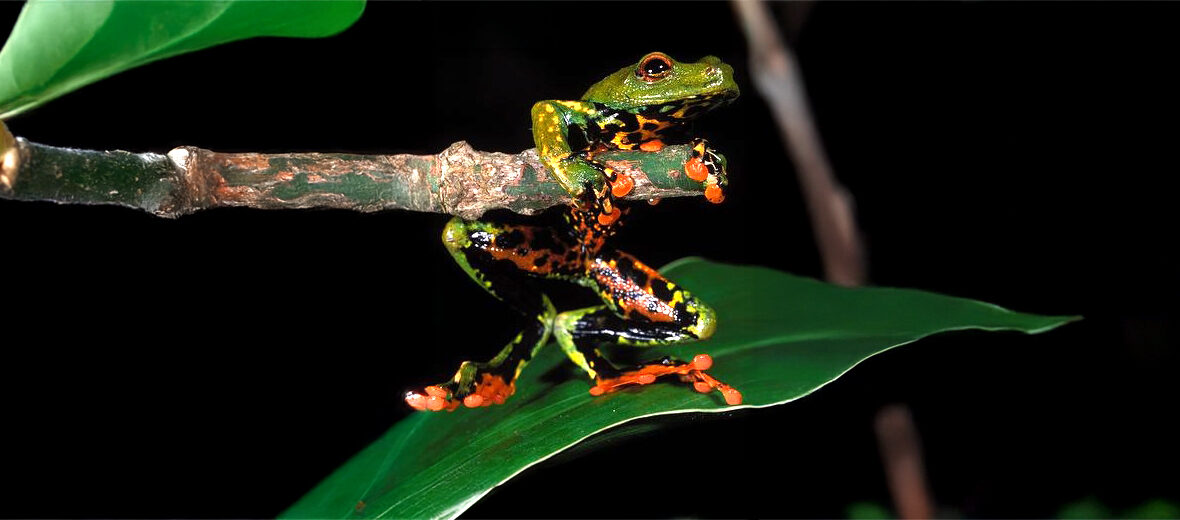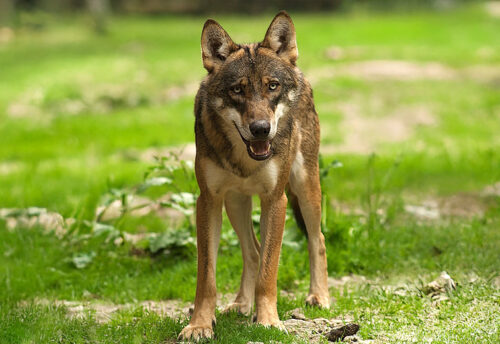
The São Tomé reed frog, aka São Tomé giant reed frog or São Tomé giant treefrog, hails only from the island of São Tomé. These are the largest Hyperolius (African reed frogs) species known. They face the threats of habitat loss and destruction at the hands of residential developments, farming, ranching, logging, and wood collection; and the potential for disease, in the form of the Chytrid fungus (Bd). Unfortunately, they have the chance of being subjected to a particularly virulent strain of the pathogen Bd, however, to date, no sick or dead frogs have been found. But the potential is there. The IUCN lists these frogs as Endangered. Their population trend is listed as decreasing.
First the Stats…
Scientific name: Hyperolius thomensis
Weight: Up to .07 ounce
Length: Up to 1.9 inches
Lifespan: Up to 4+ years
Now on to the Facts!
1.) These frogs were first described by José Vicente Barbosa du Bocage in 1886.
2.) They often hybridize with the Hyperolius molleri frog.
3.) These frogs typically prefer primary rainforest remnant habitats.
4.) They’re found at elevations of up to 2,600 feet, but can also be spotted at lower elevations down to 1,150 feet.
5.) Their range includes the Parque Natural Obô de São Tomé.
But wait, there’s more on the São Tomé reed frog!
6.) Tree holes are typically utilized for breeding pools and are often used by several individuals.
7.) Females lay up to 40 eggs each clutch.
Did you know…?
The Chytrid fungus has been found, dating back as far as 2001.
8.) To avoid desiccation (drying out), these, like so many other frogs, are nocturnal (active at night).
9.) Flies, mosquitoes, crickets, spiders, and other small arthropods are all on the menu.
10.) Birds and snakes are their primary predators.
Now a Short São Tomé Reed Frog Video!
This video talks about West African reed frogs in general.
Be sure to share & comment below! Also, check out the Critter Science YouTube channel. Videos added regularly!

Want to suggest a critter for me to write about? Let me know here.
Some source material acquired from: Wikipedia & IUCN
Photo credit: Natureology 101



